|
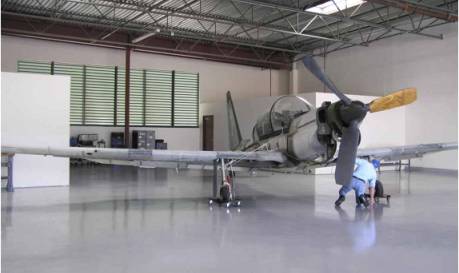 The Lockheed YO-3A "Quiet
Star" is a single-engined, propeller-driven monoplane that
was developed for battlefield observation during the Vietnam
War. It was designed to be as quiet as possible, and was intended
to observe troop movements in near-silence during hours of darkness.
The YO-3A was not armed The Lockheed YO-3A "Quiet
Star" is a single-engined, propeller-driven monoplane that
was developed for battlefield observation during the Vietnam
War. It was designed to be as quiet as possible, and was intended
to observe troop movements in near-silence during hours of darkness.
The YO-3A was not armed
The YO-3A was designed to a U.S. Army specification
of 1968, which called for an observation aircraft that would
be acoustically undetectable from the ground when flying at an
altitude of 1,200 feet at night. Lockheed was approached to produce
such a design. In 1966 the company built a prototype QT1 "Quiet
Thrust", AKA X-26B using a modified Schweizer SGS 2-32 glider.
This was abandoned for two prototypes of a two-seat version called
the QT-2 PRIZE CREW. The QT had a silenced engine and a propeller
operating at subsonic tip speed for quiet operation.
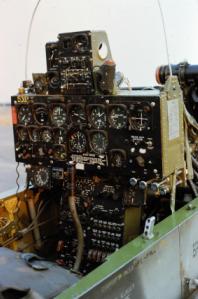 Following operation
trials with the QT-2 in Vietnam, 1968, a production version,
designated the YO-3A was ordered by the Army. Based on the QT2's
SGS 2-32 platform, the YO-3A was highly modified. It had a low-mounted
wing, retractable main-wheel landing gear and a modified fuselage
with tandem seating for a pilot in back and an observer in the
front seat using a NVAP (Night Vision Aerial Periscope) and infrared
illuminator. The YO-3A was powered by a 210 hp IO-360D engine
driving a six-bladed fixed-pitch propeller; the propeller was
later changed to a wooden three-bladed constant-speed version
and was found to be as quiet at slow cruise speeds as the six-bladed
unit, but much more efficient at higher speeds. Following operation
trials with the QT-2 in Vietnam, 1968, a production version,
designated the YO-3A was ordered by the Army. Based on the QT2's
SGS 2-32 platform, the YO-3A was highly modified. It had a low-mounted
wing, retractable main-wheel landing gear and a modified fuselage
with tandem seating for a pilot in back and an observer in the
front seat using a NVAP (Night Vision Aerial Periscope) and infrared
illuminator. The YO-3A was powered by a 210 hp IO-360D engine
driving a six-bladed fixed-pitch propeller; the propeller was
later changed to a wooden three-bladed constant-speed version
and was found to be as quiet at slow cruise speeds as the six-bladed
unit, but much more efficient at higher speeds.
Nine of the eleven YO-3As in production by LMSC
operated in South Vietnam, at night, 1970-71 (14 months) and
never took a round or were shot down. The YO-3A was very successful
in spotting movement by the North Vietnamese, but its deployment
late in the American involvement in Vietnam reduced its value
in that war. By 1975 all American troops were out of Vietnam.
Following combat evaluation of the QT-2s in Vietnam
by the Army, nine production YO-3As were sent to Long Thanh North,
Vietnam in 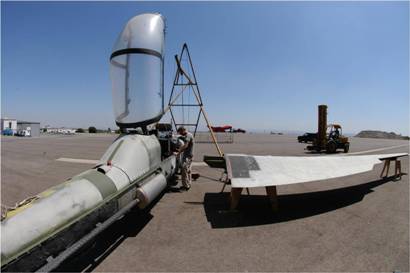 1970. three were
sent to Phu Bai and two to Binh Thuy. The aircraft were used
at night, at low altitudes. Observations were made visually (80%)
and with followed on with a Night Vision Aerial Periscope developed
by Xerox Electro-Optical, Pasadena California night vision devices.
The YO-3A had a specially designed propeller operated by 12 belts,
an exhaust system that ran the length of the aircraft and other
sound quieting technologies. The mission equipment on the YO-3A
was a Night Vision Aerial Periscope with infrared 1970. three were
sent to Phu Bai and two to Binh Thuy. The aircraft were used
at night, at low altitudes. Observations were made visually (80%)
and with followed on with a Night Vision Aerial Periscope developed
by Xerox Electro-Optical, Pasadena California night vision devices.
The YO-3A had a specially designed propeller operated by 12 belts,
an exhaust system that ran the length of the aircraft and other
sound quieting technologies. The mission equipment on the YO-3A
was a Night Vision Aerial Periscope with infrared 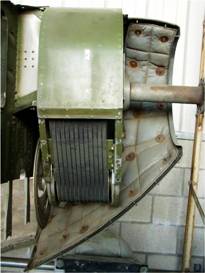 illuminator.
One YO-3A was equipped with a laser target designator. The laser
system was never used. The YO-3A operated silently at 1,000 feet,
or lower, depending on terrestrial background noise. Some pilots
were known to have gone unobserved over the enemy at 200 feet.
Occasionally daylight flights were made over the rivers. Crew
chiefs would listen to the YO-3A flying over the maintenance
section prior to deployment listening for rattles, whistles or
other noises. The propeller, even at 500 feet over the maintenance
area made only a light flutter heard just as it approached the
maintenance area. This was followed by a light rushing of wind
over the wings. Once the plane had passed over, there was no
audible sound. If any noises were heard, the plane returned to
the runway and duct tape and other measures were taken to quiet
noticeable sounds. illuminator.
One YO-3A was equipped with a laser target designator. The laser
system was never used. The YO-3A operated silently at 1,000 feet,
or lower, depending on terrestrial background noise. Some pilots
were known to have gone unobserved over the enemy at 200 feet.
Occasionally daylight flights were made over the rivers. Crew
chiefs would listen to the YO-3A flying over the maintenance
section prior to deployment listening for rattles, whistles or
other noises. The propeller, even at 500 feet over the maintenance
area made only a light flutter heard just as it approached the
maintenance area. This was followed by a light rushing of wind
over the wings. Once the plane had passed over, there was no
audible sound. If any noises were heard, the plane returned to
the runway and duct tape and other measures were taken to quiet
noticeable sounds.
After Vietnam, two YO-3As, 69-18006 and 69-18007,
were used by the Louisiana Department of Wildlife and Fisheries.
The plane was effective at catching poachers. The FBI eventually
acquired the aircraft, and operated the planes for several years,
assisting the apprehension of kidnappers and extortionists.
NASA took possession of one YO-3A, 69-18010, in
the late 1970s. The plane was used in various noise measurement
test, and was based at Moffett Field, California. (This aircraft
was later used at the NASA's Dryden research facility at Edwards
AFB, California in 1997.)
Variants:
QT-1 Quiet Thrust Prototype single-seat glider
conversion
QT-2 Two-seat version, two built for combat evaluation
Q-Star One-aircraft for propeller development
YO-3A Production aircraft for the United States Army, 11 built
Operators:
Military operators, United States Army
Other operators: Louisiana Department of Wildlife and Fisheries,
FBI and NASA.
YO-3A Aircraft History:
69-18000 is on display at the Army Collection at
Fort Rucker. 1st production aircraft which remained in the USA
for flight testing.
69-18001 is on display at the Hiller Museum. Vietnam operations
1970-72.
69-18002 Crash landed at Long Thanh November 1970. Vietnam operations
1970.
69-18003 Obtained by Mr. Richard Osborne as of 14 Feb 1977, currently
stored awaiting restoration. Vietnam operations 1970-72.
69-18004 Crashed near Bien Boa SVN 6 June 1971, both crew members
killed CW2 M. Loving and CW2 C. Borchers 73rd SAC. Vietnam operations
1970-71.
69-18005 was parked at Skagit Regional Airport, Washington. Donated
to the Seattle Museum of Flight. Vietnam operations1970-72.
69-18006 is at the Pima Air and Space Museum, Arizona. Vietnam
operations 1970-72. Operated by (LDWF), later FBI.
69-18007 is at the Western Museum of Flight in storage. Vietnam
operations 1970-72. Operated by Louisana Dept of Wildlife and
Fisheries, later FBI. Western Museum of Flight.
69-18008 Destroyed in Crash in South Vietnam. Pilot and Observer
survived.
69-18009 Crashed near Hunter Ligget AAF/Ft. Ord in 1970. Two
USAF personel aboard. One significantly injured.
69-18010 Acquired by NASA in 1978 and was based at Moffett Field,
California. Later used at NASA's Dryden research facility at
Edwards AFB, California in 1997. Vietnam operations 1970-72.
- Specifications:
-
- Wing span: 57 feet 1 inch.
- Empty weight: Approx. 3,129 pounds.
- Maximum speed: 138 MPH.
- Cruising speed: 110 MPH, or as slow as 70 mph for
maximum noise reduction.
- Endurance: Approx. 5 hours.
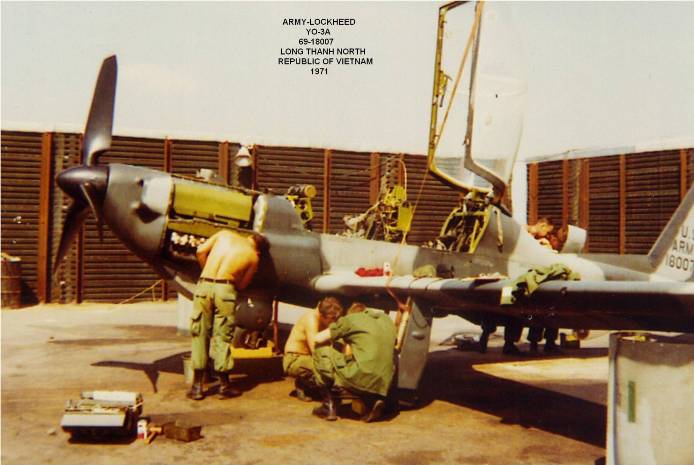
|